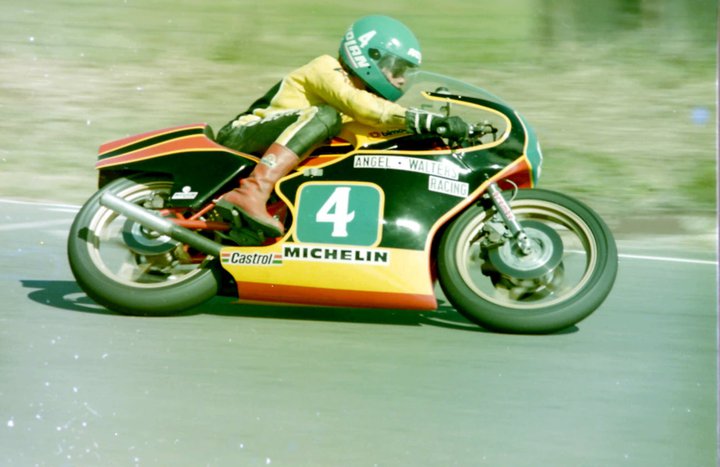Bathurst Motorcycle Races – With Phil Hall
There is no word in the Australian motorsports lexicon more evocative than Bathurst. Over the years Australia has played host (and continues to play host) to motorsporting events at the highest level possible up to and including rounds of various world championships, but even these pale into insignificance when compared to the title of today’s article.
The word is the name of a city in the central west of NSW and even that is misleading, but, say the word and any enthusiast will know exactly what you mean.
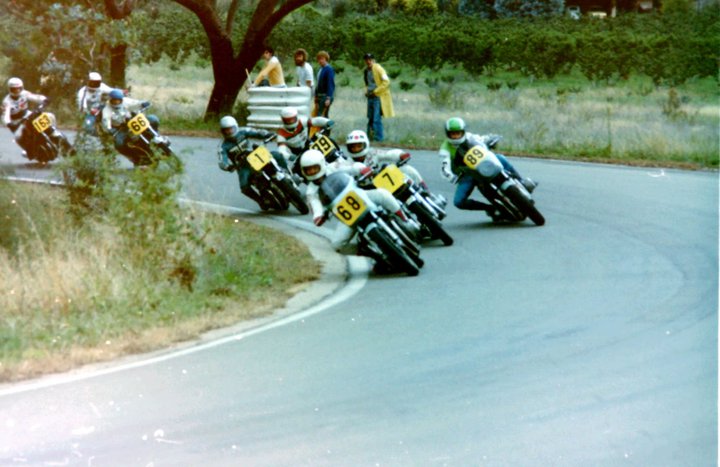
For this historic town is the site of a mountain on which is located Australia’s most beloved racing circuit, the circuit named after the mountain, Mount Panorama. True enthusiasts shorten it to “The Mountain” in the same way as the Isle of Man is simply known as “The Island”. And the comparison os a valid one as far as most Australians are concerned. Say “Bathurst”, “Mount Panorama” or “The Mountain” and the majority of Australians, even those who have no interest in motorsports at all, will know what you mean.
It is is not the intention of this article to be historical or analytical. The bare facts are that, the 6.213km stretch of public road that wind up, across and down Mount Panorama are, for most enthusiasts, hallowed ground. Indeed, for many, it is even more than that. When my good mate, Les Randles, passed away some years ago, a stipulation in his will was that his ashes were to be spread at Skyline while we remembered both him and all the gladiators who had fought the track throughout the years.
Of course the majority of enthusiasts who think of Bathurst think of the 1000km car race that is held there every October. Far fewer will think of the 12 hour production car race that is held there each February and even fewer will think of motorcycle racing, but it is motorcycle racing at Bathurst that is my focus today.
From the very beginning (1938), bikes have been part of The Mountain. Sadly, the last motorcycle race held at Bathurst was in 2000, now 15 years ago. But, in that period of time, the circuit and the riders have etched an indelible mark into the track’s, the city’s and the sport’s history.
I was fortunate to have been around during the circuits most glamorous period, attending race meetings there from 1976 through to 1981 and then again at the last meeting. I attended as a spectator, a photographer and a commentator and, in those years, I saw the best and the worst that the track had to offer.
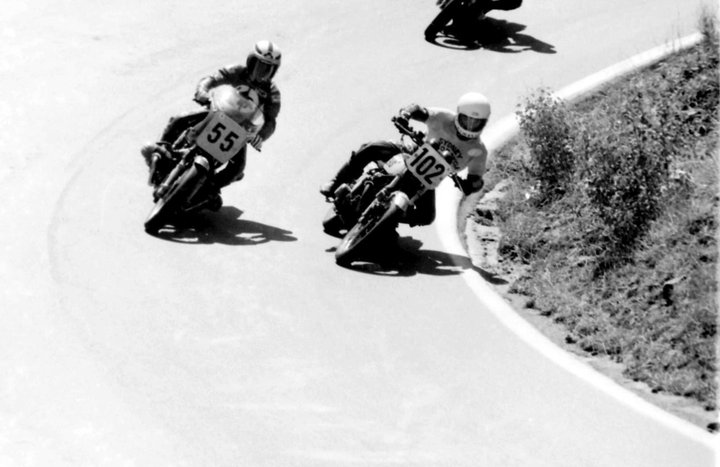
It is necessary to explain to many of my readers whose memory does not stretch back as far as mine that the Bathurst bike races evoked the same passion and fanaticism amongst motorcyclists as the 1000km does for car racing fans. It was said at the time that most motorcycle road racing enthusiasts’ calendars did not run from January to Decemeber but rather from Easter to Easter. For the true believers only two weekends in the year really mattered, Easter and the third weekend in October when the annual Castrol Six Hour race was run at Amaroo Park.
In the rankings of great races, Bathurst produced two of what would be every enthusiasts’ Top Five races, the 1974 Unlimited Grand Prix and the 1979 race of the same name. Sadly, I hadn’t started watching bike racing in 1974 but I watched the 1979 race with huge interest and it is included in my personal Top Five.
So the following will be a meander through the highlights of my Bathurst memories. As time passes, details become less clear and years merge into years so I apologise in advance for any small historical innacuracies that may slip in.
Bathurst 1976 was memorable for the rain storm that swept into the area on Sunday afternoon causing us to scurry for the car and get ourselves and our cameras into a dry spot. The Japanese star, Takai, had brought a genuine “factory” OW31 Yamaha from Japan to use at the meeting and he totally dominated the Unlimited races, besting our two local stars, Warren Willing and Gregg Hansford.
He repeated the dose the year after and then left the field with a 2-from-2 score. His place was taken by Hideo Kanaya who emulated him the following year. The Japanese factories, for whatever reason, took pity on us after that and left the big races to be contested by local riders. Far from devaluing the events, it actually made them even more fascinating for us. Most Aussie sports fans don’t really like the idea of overseas stars coming over here and winning our big races, xenophobic little trolls that we are!
The Easter races were held over three days and a large number of races. With a circuit that is over 6km long, the races were long by comparsion to today’s sprint races and were nearly always engrossing. Bathurst had its own challenges as a spectator venue. The long lap distance and the very spread-out nature of the layout meant that it was impossible to see the whole track from any one vantage point and it was possible miss important parts of the races if you were not actually spectating at the point at which they occurred. For this reason, most spectators gathered at the top of the mountain, occupying the areas from Reid Park down to Forrest Elbow. Here you could get up close and personal with the bikes as they snaked across the top of the mountain.
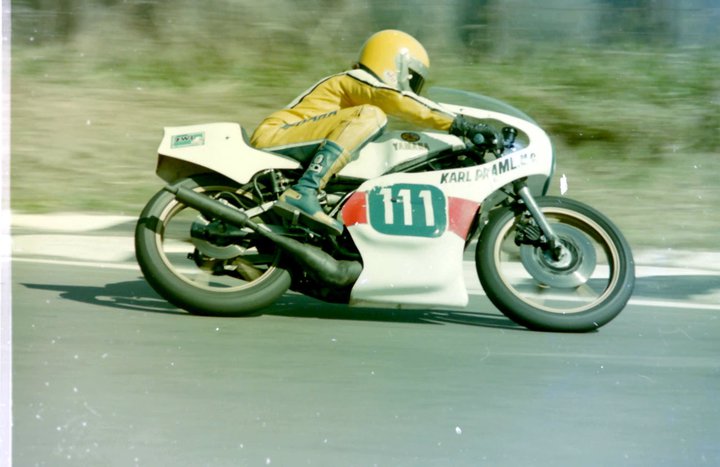
There were no superscreens so that the spectators could follow the parts of the track that were not within vision so organisers relied on race commentary that was managed from two commentary boxes, one above the start/finish line on the main straight and one that was perched above Skyline at the highest part of the course.
It was also at the top of the mountain that the, how shall I say it, more “rowdy” element of the crowd gathered and it was that group, which grew steadily in numbers year by year, that was to precipitate the riots that blighted the races and dominated the media reports in the late 70’s – early-80’s. For altogether too many of the mountain-dwellers, Bathurst was an excuse for a three day booze-up and many of these people never even raised themselves from their positions to go out to the fence and watch a race.
The concern by the authorities about the increasingly raucous behavior on the mountain especially at night once the races were over (burnouts in the dirt, torching peoples’ bikes, fights and excessive drinking/drug taking) led the police to be in increasing numbers on the mountain which only inflamed the situation. Stand-offs between the police and belligerent spectators became increasingly tense and ultimately led to ugly riots that garnered all the wrong sorts of publicity.
In terms of an event to which a man could take his family for the weekend, the spetcator areas at the top of the mountain were known to be no-go zones.
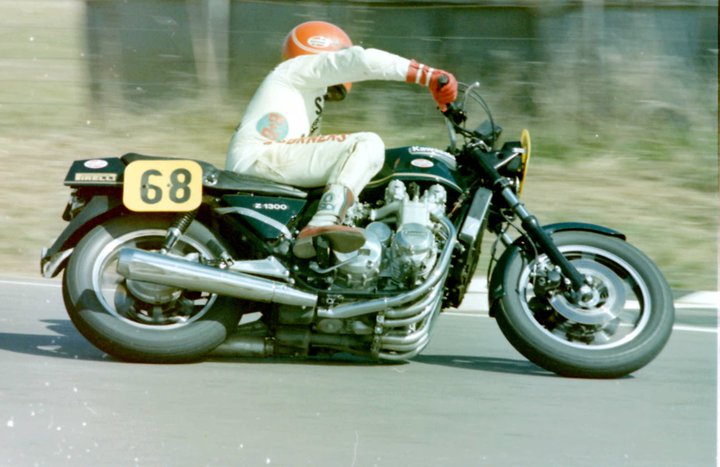
As a spectator, Bathurst WAS challenging. As a photographer, it was even more so. That is not to say that there weren’t dozens of great spots from which to shoot, but getting there was always an issue. Later the organisers arranged a mini bus that circulated after each race allowing the snappers to shift camp before the next event. Moving around within the designated areas usually required the skills of a mountain goat, especially at the top of the mountain. The other disadvantage was that most of the positions that we used were on the other side of the track from the spectator stands which meant that we usually missed the race commentary altogether as the speakers weren’t turned towards us. We missed a lot of important stuff because of that.
As a commentator, a similar degree of dexterity was required. It was a general rule that staff of the two boxes handed over to each other when the race leaders and the main pack were within view of their box. But, when an incident or something interesting happened down in the pack (and the bikes got VERY spread out on such a long lap) diplomacy and fancy footwork was required so as not to make the commentary appear disjointed or, worse still, tense.
There are many who believe that it was this factor that started the gradual decline of Easter on The Mountain. Certainly having police road blocks located on the outskirts of town on every road leading into Bathurst was a disincentive. Nearly all motorcycles coming into town from any direction were routinely stopped, licence checks were carried out and luggage searched for drugs and weapons. It was claimed to be for safety reasons but it basically amounted to officially sanctioned police harrassment. Spectators coming to the meeting by car could also suffer the same treatment but it was far less common and it was clear that Mr Suburban in his Kingswood who was carrying his wife and family were much less likely to be targetted than a rusty old EH with 5 bearded and scruffy-looking individuals inside. For myself, I was never ever stopped.
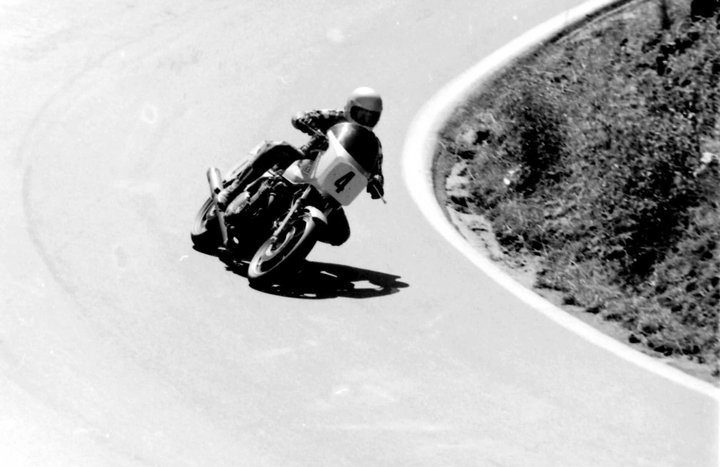
The races themselves were always wonderful, even those that appeared to have the least promise. After all, you could scarcely expect 125’s to turn on a show on a course that had a 174m difference in elevation between its highest and lowest points. But what the track lacked in appeal for the smaller bikes it made up for in collossal fields and close racing.
You see, it was a tradition that anybody who had a bike or could beg, borrow or steal a bike, entered the races at Bathurst. Some riders, especially older ones, only ever entered one race meeting a year, Bathurst. There were top bikes, like TZ750’s and things, that were only ever seen at Bathurst! Later the organisers cracked down on this wheeze, insisting that a Bathurst acceptance was NOT a “given” but was dependent upon riders having competed elsewhere during the previous 12 months. But even this “rule” was cheerfully broken, most of the part-time racers circumventing it by entering and racing at the traditional pre-Bathurst meeting at Amaroo Park just a few weeks before. Truth be known, most riders appreciated the opportunity of blowing out the cobwebs before the big event anyway.
In 1981, when Kent Miklenda raced the Shadowfax Kawasaki in the Unlimited C Grade race on the Saturday afternoon, he started on the 33rd row of the grid and the bikes were FOUR wide on the grid. AND there were more rows behind his position.
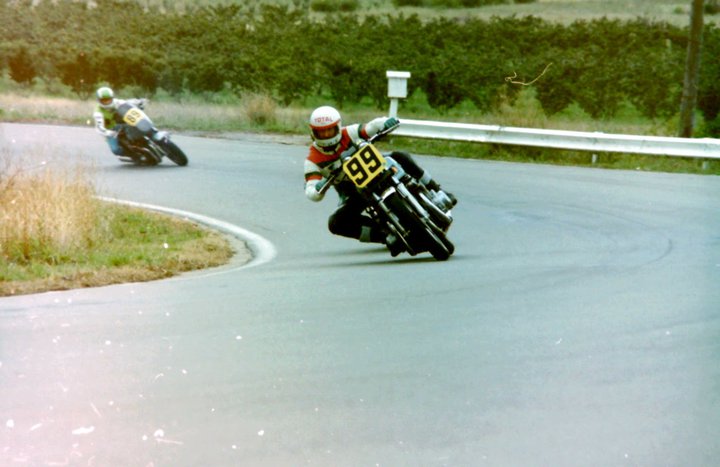
Once I started photographing and later commentating, I tended to spend most of my time in and around the pits when I wasn’t out on the track snapping.
Bathurst was, as I already noted, a three day event so you either stayed at the track and camped out, found a motel in town, very difficult, or stayed further out of town and commuted to the track each day. My brother was in the army at the time and he managed to swing permission for us all to stay at the army camp outside Lithgow each year so we did Bathurst in comfort and style.
Bathurst always provided many highs, and, unfortnately, more than its fair share of lows. In my period of attendance there were four deaths; Ross Barelli in 1976, Ron Toombs in 1979, and Alec Dick and Rob Moorehouse in 1980. Each of these was horrific in its own way and left a mark on the Bathurst memories that can never be erased.
Bathurst was an unforgiving track and, as changes to the “safety” aspects of the track became more and more skewed towards the needs of the CAR racing community, so the suitability of the track for motorcycle racing became less and less. As a consequence there were not only deaths but some dreadful injuries as well. Dennis Neill’s shocking accident in 1980 effectively finished his career; Dave King similarly rode his last race at Bathurst after crashing and breaking his back, spending many months afterwards in the Spinal Unit at Royal North Shore Hospital. And there are many more harrowing tales to tell.
Bathurst always had more than its fair share of bad luck/bad management stories. Like the second year that Ron Boulden, a rider whose career I was closely following, raced there. Running in a podium position in the 350 race, the bike mysteriously slowed towards the end of the race and dropped him down the order. When he returned to the pits you could smell burnt rubber and a quick look showed that the front tyre was rubbing on the inside of the mudguard and had nearly worn it right through. Later research indicated that the much higher speeds recorded at Bathurst actually made the front tyre swell and that many TZ riders either fitted a spacer to raise the front mudguard or simply ran without one altogether.
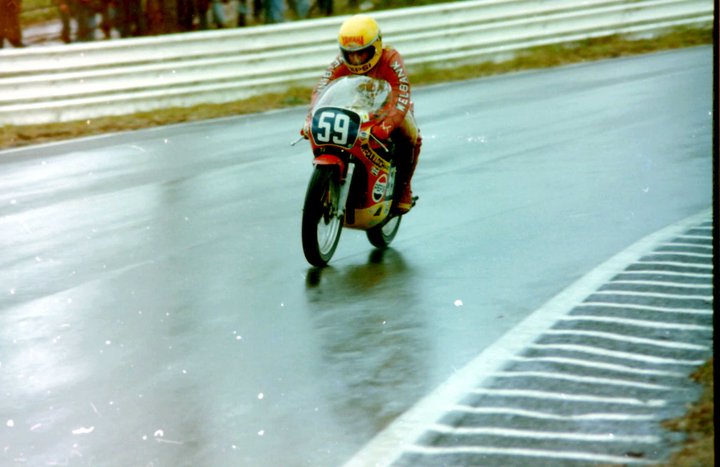
The following year, Boulden, running his new 250 in the Lightweight race, had a massive lead coming across the mountain in the closing part of the race. It was raining lightly and he wasn’t an experienced wet-weather rider. Good sense suggests that you back off a little and bring it home. Youth and enthusiams sees the glory of a Bathurst win beckoning and causes you to press on. With the rest of the field not even in sight as he dropped down into Forrest Elbow, a yellow flag being waved in the Esses told the sad story. Bathurst glory would come to him but it wasn’t going to be in this race.
While Boulden’s win in the 1979 Unlimited Grand Prix after a race-long duel with the two Kiwis, Graeme Crosby and John Woodley (TKA Kawasaki KR750 and Suzuki RG500 respectively) is spoken of in hushed tones whenever Bathurst is mentioned, it is not the only highlight for me even though, as a Boulden fan, I cheered myself hoarse. Tony Hatton’s win in the sheeting rain in the Arai 500 was epic. With the mountain shrouded in a pea soup fog as well as the rain, Hatton reeled off metronomic laps only slightly slower than his dry weather times. It was an epic ride, right up there with the very, very best. At the end of the race his crew noticed that his lap time on the last lap was a couple of seconds slower and they asked him why.
Believing that he had just slowed so that he could get the bike home, the crew was amazed to hear that he had actually crashed on the last lap! Coming out of Forrest Elbow at the top of the straight, the front tyre had lost adhesion and the bike had low-sided. Showing his consummate skill, Tony had allowed the bike to slide along, using his left leg for support, until it had slowed sufficiently for him to lever it up and continue riding. To this day there is a twinkle in Tony’s eye when he tells this story.
I could recount similar stories for a while yet (like the time the Team Honda crew fitted an Eveready Magnet Lite torch to the Honda 900 because the regulations stated that the bikes entered in the Arai 500 must be fitted with a headlight! When the light began to dim in the closing stages of the race other teams threatened a protest as the bike did not have a “working headlight” So the team pulled the rider in, fitted another torch and they went back out and won the race.)
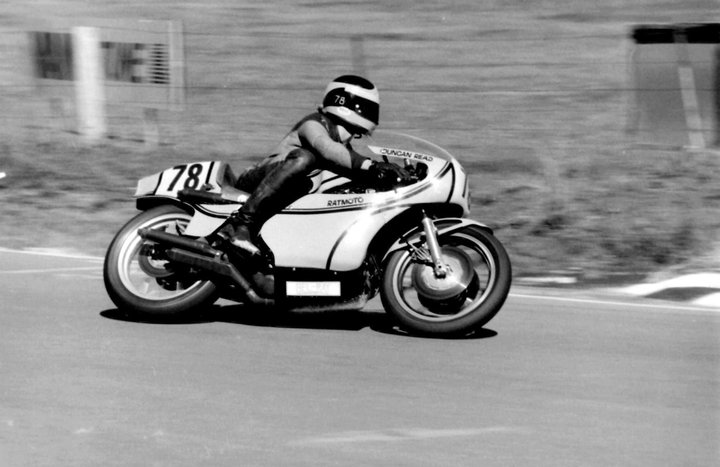
But, despite all the on-track memories, some of the most endurung are those that involve the PEOPLE, because it is the people who make the racing, and what a special collection of people, the Bathurst ones were.
Foggy mornings with the sun barely up; lines of pyjama and dressing-gown clad people slowly making their way to and from the amenities block, sponge bags in hand or a toothbrush sticking out of the side of the mouth; the smell of bacon being fried over an open fire; noises associated with furious work being done on a bike, often with the bike lying on its side supported by a log or a milk crate; Tiny tents with the moisture dripping off them as the sun melts the frost of the previous night; the more affluent racers had a bigger tent or even a caravan; working on bikes in the open; the brapp-brapp of two stroke engines dominating the soundscape; red eyes and unshaven faces attesting to the celebrations of the night before; and, above all that, the smell of two stroke fumes and Castrol R as the pits begin to become clouded with smoke.
So many great memories. I had the pleasure of spending a lot of time with the late Mike Hailwood and recall sitting in the caravan listening to him quote vast passages of the “Goon Show” all with the correct voices. Watching close up the big bikes come off the last hump on Conrod Straight with both wheels off the ground and then hearing the “thump” as they hit the ground on maximum suspension compression, all at nearly 300km/h was electrifying.
And then there was 2000. Years after the racing had ceased, a Sydney events manager took on the formidable task of trying to revive the Easter Carnival. The entry was impressive, the racing was great and the atmosphere came close to duplicating that of the golden years. But the project was blighted with broken promises, failure to deliver on key aspects of the meeting by some parties and the whole exercise led to the bankruptcy of the promoter.
Truth be told, even in 2000 the track was barely viable as a road race venue. Changes and “upgrades” to suit the car racing fraternity had turned the whole circuit into what a racing friend of mine termed, “a concrete tunnel” Many, perhaps most, of the people who raced there, raced with the belief that this was going to be the very last chance they would ever get to race on the iconic circuit. And so it proved to be. It was a sad end to motorcycle racing on the mountain.
I feel privileged to have been able to attend all the meetings that I did and I feel sympathy for those who have never had the opportunity of seeing the bikes on the mountain. Whether a newer circuit will be built there some time in the future is problematical. Time moves on but it isn’t always progress. In the case of Bathurst, this certainly is so.
